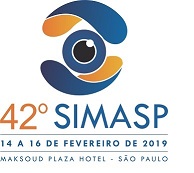Dados do Trabalho
Título
TOMOGRAPHIC AND BIOMECHANICAL CORNEAL ANALYSIS IN RING SEGMENTS IMPLANTATION FOR KERATOCONUS
Introdução
Keratoconus (KC) is a progressive non‑inflammatory condition, that results in conical protrusion of the cornea leading to myopia and irregular astigmatism. In early stages of the disease, optical correction is well attained using spectacles and contact lenses. However, in advanced stages, surgical treatments may be the only viable options. Intracorneal ring segments (ICRSs) demonstrated to be a surgical alternative to at least postpone, if not entirely obviate, the need for lamellar or penetrating keratoplasty in KC. However, considering the results variability obtained from ICRS in KC, multivaried analysis could assist to create a possible correlation based on biomechical parameters, providing more precision and refractive previsibility for ICRS implantation outcomes, which is the goal of this study.
Métodos
This is an observational retrospective study, in which 26 eyes of 20 patients eyes with KC, were analyzed before and 6-months after ICRS implantation. All surgeries were realized with the same surgeon, under topical anesthesia and femtosecond laser-assisted placement of the ring segments. The pre and postoperative comparative analysis included: visual acuity with and without correction, refractional error, tomographic and biomechanical evaluation. The study was done using Pentacam HR and Corvis ST (Oculus Optikgeräte GmbH, Wetzlar, Germany) for tomographic and biomechanical assessment, respectively. MedCalc Statistical Software (version 16.8.4) was used for statystical analysis.
Resultados
There was a significant improvement of cylindrical refractive error (cyl)-(graphic 1), where median cyl value pre op was -4.625 and -1.250 pos op. Visual acuity with (CC) and without correction (SC), converted to logarithm of minimal angle resolution (LogMAR) was also significantly better after ICRS implantation. The median preoperative value of LogMAR SC was 0.602 and 0.349 CC, whereas, these values were 0.301 and 0.096, respectively, 6-months after ring implantation (graphics 2 and 3). Graphic 4 shows a positive correlation between Improvement of visual acuity and pachimetry (IC 95% -0.693 to -0.0369).
Conclusões
ICRS are safe and useful for corneal modeling in keratoconus, however, biomechanical changes not yet fully understood, could be responsible for the limitation of the ring segments effect in some cases, leading to optical and refractive imprevisibility. So that, more studies with larger samples and multivaried biomechanical analysis are necessary to understand these unexpected outcomes.
Palavras Chave
cornea, corneal topography, keratoconus
Arquivos
Área
Refrativa
Instituições
UNIRIO - Rio de Janeiro - Brasil
Autores
Thiago José Muniz Machado Mazzeo, Bernardo Lopes, Nelson Batista Sena Júnior, Renato Ambrósio Júnior
